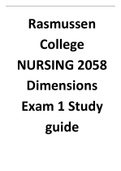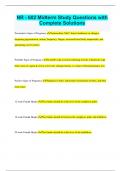College aantekeningen
Summary all 12 lectures Essentials of Media Psychology
- Instelling
- Vrije Universiteit Amsterdam (VU)
Summary of all 12 lectures of the subject Essentials of Media Psychology given during the Master Communication Science.
[Meer zien]













